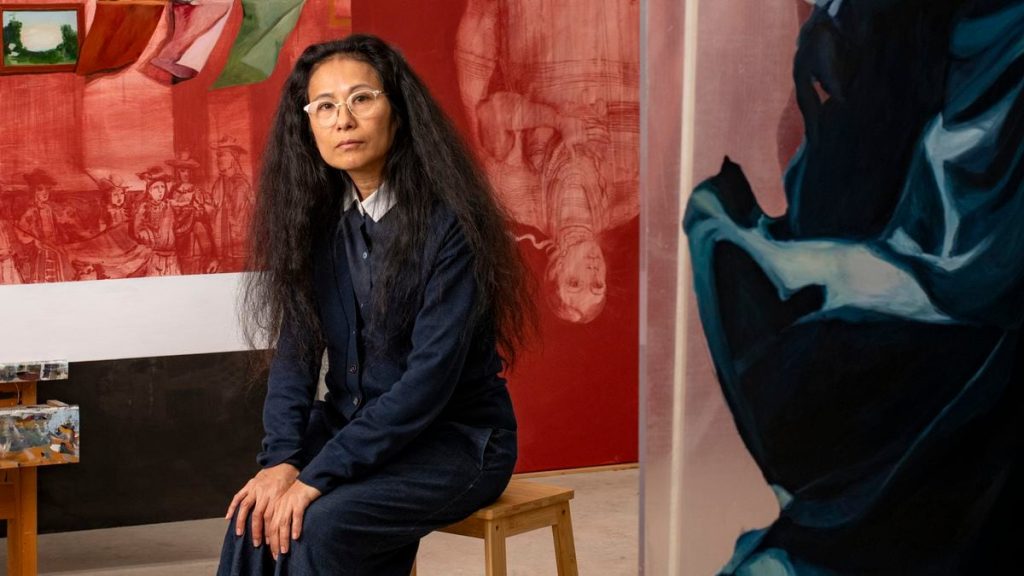In the world, there are monuments to heroes and heroines that are unknown in Spain. One such monument is the stone statue of Micaela Bastidas Puyucahua in Lima. She was a descendant of Indigenous and African people who, along with her husband Túpac Amaru II, led revolts against Spanish domination in 1780. Captured with her family, she was executed by garrote and then dismembered. Few Spaniards are familiar with Micaela Bastidas, a figure of Peruvian independence whose biography intertwines history and legend. Her monument is part of a series of 12 monuments from Latin America and the Philippines, former Spanish colonies, replicated in painting on acrylic by Peruvian-Spanish artist Sandra Gamarra Heshiki (52 years old). The collection is called Jardín migrante and is the last room in the Spanish pavilion at the upcoming Venice Art Biennale, opening to the public on April 20. The aim is to propose a shift in perspective from the culture that has been passed down through Western history texts, towards decolonization.
In Madrid, as the opening approaches, Gamarra and curator Agustín Pérez Rubio (51 years old) work tirelessly in the studio. The collaboration between the two had already sparked controversy three years ago with the exhibition Buen gobierno at Sala Alcalá 31, belonging to the Madrid Regional Government, which offended many due to its denunciation of Spanish colonialism in the Americas. Despite censorship of some words in the exhibition, including “racism” and “conflict”, the duo is committed to challenging historical narratives and highlighting the persistence of colonial influences in contemporary society.
Gamarra’s new project, Pinacoteca migrante, presents a different museum model, featuring paintings based on existing works from Spanish collections that reveal colonial principles. The initiative has faced backlash, with concerns over the potential loss of artistic heritage. However, Pérez Rubio argues for acknowledging Spain’s colonial past and the need for amnesty, both within and outside the country. By demanding acknowledgment and apology for colonialism, the project aims to initiate dialogue and reflection on historical and ongoing injustices.
Addressing the complexities of colonialism, Gamarra’s paintings explore the interconnections between exploitation of people and resources. She emphasizes how colonial ideologies have influenced societal norms and attitudes towards labor and productivity. By incorporating contemporary references and challenging stereotypical depictions of indigenous communities, her work sheds light on the lingering impact of colonialism in Spain and abroad. The project encourages viewers to consider the implications of colonization on various aspects of society, including environmental degradation and socio-economic disparities.
Despite criticism over her non-Spanish origins, Gamarra’s representation at the Venice Biennale serves as a platform for reevaluating Spain’s colonial history and fostering understanding between different cultures. The inclusion of international artists in the exhibition reflects a shift towards inclusivity and recognition of diverse perspectives. Through thought-provoking artworks and discussions, the project aims to prompt a reevaluation of prevailing narratives and prompt meaningful dialogue on the legacies of colonialism.
As the exhibition at the Biennale unfolds, visitors will encounter a series of rooms that guide them through different thematic areas, each addressing various aspects of colonialism and its impacts. From landscapes to critiques of capitalist overproduction, the paintings displayed reflect a nuanced understanding of colonial legacies and their enduring effects on contemporary society. Through engaging with diverse voices and perspectives, the project invites audiences to reflect on past atrocities and envision a more equitable future.


